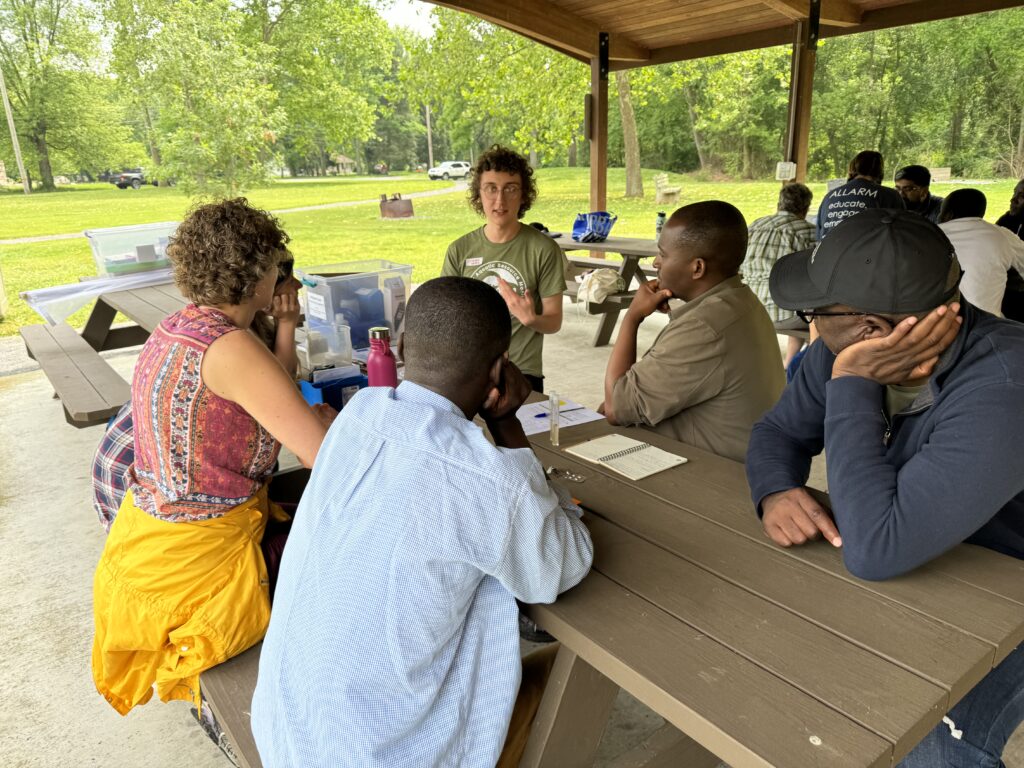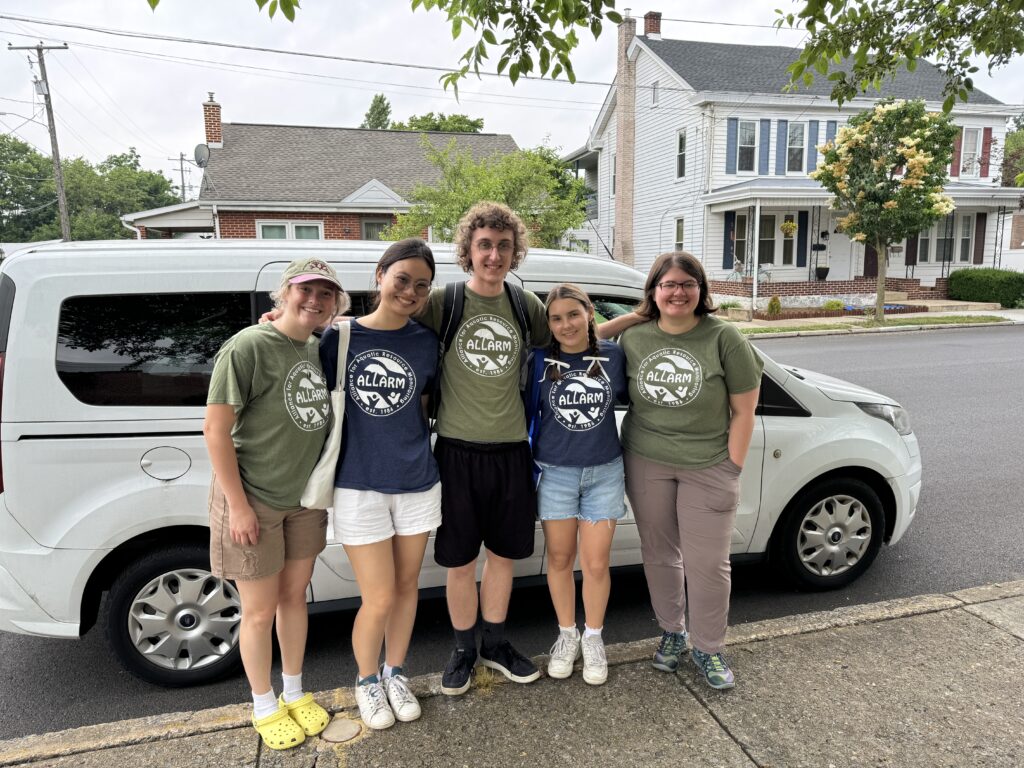One June 5th, ALLARM hosted an event for the Collaborative Learning School (CLS) at Stuart Park. Participants took part in a series of educational experiences, many of which occurred at the Dickinson College Farm, the theme of which was to discuss sustainable food systems in the Chesapeake Bay watershed based on the integrated water-energy-food nexus framework. When the College Farm reached out for potential collaboration, ALLARM was eager to participate. The CLS hosted 17 early-career researchers (ECR) from all over the world, split into four areas of expertise: Waste Management and Agriculture, Impact of Agricultural Management Practices on Soil Health, Biogas Anaerobic Digestion for Livestock and Food Waste, and Livestock Management and Water Quality. ALLARMies Phoebe Galione (Outreach Manager), Lindsay VanFossen (Water Quality Technician), Crosby Wilkin ’26, Kailey Sipe ’25, and Uyen Bui ’27 all helped lead the event. To prepare for the event Kailey, Uyen and Crosby took turns teaching one another the procedures as if we were teaching the ECRs.
At the event, Phoebe and Lindsay both gave fantastic talks about what ALLARM is and the monitoring that we and our volunteers do. Phoebe then gave an overview on the Chesapeake Bay watershed before providing context for our setting, Stuart Park, and what challenges both are facing. Transitioning to the hands-on portion, Lindsay first explained the three ways to monitor a stream: physical-visual, chemical, and biological monitoring. After the overviews we taught the ERCs how our volunteers take samples and how they calculate water clarity. After the group explanation we split into four groups to do a hands-on activity where we taught them about some of the parameters our volunteers test for including conductivity, pH, and nitrate-nitrogen.

Kailey Sipe ‘25:
The farm restoration CLS event was my first in-person training experience throughout my time at ALLARM. I had the opportunity to train a group of four early career researchers from around the world. Through this experience, I saw the engagement and interest on their faces when conducting each test. I could tell that they were all genuinely curious about what ALLARM had to offer, as they all asked insightful questions and even looked online where to buy the different LaMotte kits! Through their questions and comments, I was able to learn more about what they do in their research, and talk about what I do at ALLARM with water testing, and how our experiences correlate. My favorite moment was when my group and I were conducting nitrate-nitrogen testing. Two of the members of my group had a more pink colored solution, while the other two had a more clear colored solution in their test tubes. We brainstormed together why this might be the case and concluded that it may be due to temperature differences as the test tubes sat out. Overall, I am grateful to have experienced this event as I had the ability to connect with a diverse group of researchers and gained valuable insights into different perspectives within my field.
Uyen Bui ‘27:
As a first-time ALLARMie, this event with CLS was filled with excitement and lessons learned. Through the presentations of our lovely full-time staff members, Phoebe Galione and Lindsay VanFossen, I got to have a more insightful look at the challenges that Chesapeake Bay is facing and various ways to monitor streams alongside the CLS early-career researchers. It was incredible to be able to work with these individuals who have different fields of specialty and learn from them. During the event, I had the opportunity to walk the Livestock team through the pH test kit. Seeing how dedicated they were to perform the test, I was truly inspired. I was reminded that it is important to have a beginner’s mind when it comes to learning, even if it is something I already know. After we finished going through all the tests we had additional time to chat and connect with the ECRs, which was a great way to wrap up my first-ever event with ALLARM. I am extremely grateful for the assistance of everyone on the ALLARM team, and I look forward to participating in more community events and learning more lessons!
Crosby Wilkin ‘26:
In this event I had the amazing opportunity to teach a group of ERCs about what we and our volunteers do at ALLARM. I walked my group through completing our nitrate-nitrogen test kit, then conductivity, and finally the pH test kit. By going through the parameters, I got to explain to them the importance of each parameter and what it can tell us about stream health. My group was fun to work with and asked some amazing questions. They even made some fantastic inferences about the results we got from the test, for example they figured out that the stream’s pH was a bit more basic/alkaline due to it being a limestone stream. After we finished going through all the parameters, I got to have a quick chat with my group about biological monitoring and the different macroinvertebrates we get to see, and what macroinvertebrates we would’ve found if we had done a macro kick at Stuart Park. Finally, I gave a presentation to all the ERCs about the data packets we make for our volunteers, explaining what we put in them and why we make them. The data packet we used as an example was from Stuart Park, so I encouraged the ERCs to compare their results with the data our volunteers collected. Overall, it was a great experience, and I feel much more confident in both my knowledge about ALLARM, my speaking skills, and my teaching skills.
